- Home
- Robert J. Sawyer
Hybrids Page 16
Hybrids Read online
Page 16
“So you’re saying-what?-that the two halves of the brain communicate telepathically? Oh, come on!”
“Theyare communicating, even in the absence of the hard-wired link between them,” said Louise. “That’s a fact.”
“Then why don’t I pick up your thoughts when I’m standing next to you?”
“Well, first, remember the brain is essentially enclosed in a Faraday cage, shielding it. Second, Pockett believes the major oscillations associated with consciousness are in the range of one to one hundred hertz, with most of the power around forty hertz. That means they have a wavelength of about 8,000 kilometers, and the ideal antenna for picking up an electromagnetic signal is one wavelength long. Without either a truly giant receiver orvery sensitive equipment, you’d never pick up any part of my consciousness by just being close to me. But that the field is integrated over the volume of a single braindoes make sense. One of the big issues in consciousness is the so-called binding problem. Look at that book, there.” She pointed at a volume sitting on Jock’s desk, an old RAND nuclear-warfare study. “One part of the brain recognizes that it’s green. Another part picks out the outline of the object from the background. A third part digs up the word ‘book’ to describe it. Weknow that’s how the brain works-a bunch of compartmentalized functions. But how do all those bits get bound together, producing the thought that we’re looking at a green thing called a book? CEMI says the electromagnetic field is what does the binding.”
“This is all very speculative,” said Jock.
“It’s all very cutting edge, but itis a good, solid scientific theory that makes falsifiable predictions. I tell you, Jock, I hadn’t thought a lot about exactly what constitutes consciousness until all this stuff with alternative worlds began, but it’s a fascinating area of research.”
“And you’re worried that our consciousness might get scrambled as Earth’s magnetic field collapses?”
“I don’t say anything is going to happen-after all, youare right when you say the Neanderthals went through their own magnetic-field collapse recently and nothing happened to them. But, well, yes-Iam worried. And I think you should be, too.”
Chapter Twenty-three
“But the Neanderthals didn’t cross the Strait of Gibraltar. There, at Gibraltar, we saw the difference between us and them. For, when we saw a new world, just a short distance away, we took it...”
“This,” said Vissan, placing a pale green device on the table in her cabin, “is the prototype codon writer.”
Mary looked at the machine. It was about the size and shape of three loaves of bread, placed end to end-although no Neanderthal would ever think of it that way.
“It can synthesize any string of deoxyribonucleic acid, or ribonucleic acid, if you prefer, as well as the additional proteins needed to manufacture chromosomes or other structures.”
Mary shook her head in wonder. “It’s a life factory.” She looked at Vissan. “In my world, you would have won the Nobel Prize for this-our top honor for scientific work.”
“But here,” said Vissan, “it is banned.” Her voice was bitter. “My intentions were so benign.”
Mary frowned. “Whatwere your intentions?”
Vissan was quiet for a moment. “I have a younger brother who lives in an institution.” She looked at Mary. “We have eliminated most inheritable genetic disorders, but there are still things that can go wrong, things that are genetic but not inherited. My brother has-I don’t know what you call it. He has an extra chromosome twenty-two.”
“Chromosome twenty-one, you mean,” said Mary. Then: “No, of course you don’t. Itwould be number twenty-two here. We call that Down syndrome.”
“Are the symptoms the same in Gliksins?” asked Vissan. “Mental and physical feebleness?”
Mary nodded. But Down also caused facial abnormalities in Gliksins, including a protruding tongue, a slack jaw, and epicanthic folds even in occidentals. Mary wondered what a Barast with Down syndrome would look like.
“My mother was a member of generation 140. She should have had her first child when she was twenty years old, but failed to conceive then-or when she was thirty. She had me when she was forty, and my brother Lanamar when she was fifty.”
“Conceptions that late in life increase the likelihood of Down in my people, too,” said Mary.
“Because the body’s ability to produce clean sets of chromosomes has deteriorated. I wanted to overcome that-and I did. My codon writer could have eliminated all copying errors, all-“
“All what?” said Mary.
“I’m sorry,” said Christine. “I don’t know how to translate the word Vissan has used. It refers to when there are three chromosomes where there should only be a pair.”
“Trisomy,” supplied Mary.
“Had my parents had access to such technology,” continued Vissan, “letting them output a perfect diploid set of chromosomes despite their age, Lanamar would be normal. And, of course, there are a host of similar conditions that also could be avoided.”
Indeed there are, thought Mary. One in 500 Gliksin children were born with a sex-chromosome difficulty, such as Klinefelter syndrome (two or more X chromosomes and a Y, or often a mosaic), triple-X syndrome, Turner syndrome (a single X chromosome either completely lacking a mate or with a truncated second sex chromosome), or XYY syndrome, which could predispose males to violence-she suspected Cornelius Ruskin had an extra Y; he certainly had the body type and personality. Other combinations occurred, but they mostly resulted in miscarriages.
“But that’s not all,” said Vissan. “Preventing trisomy and similar disorders was only the initial impetus for my work. Once I got into my research, other wondrous possibilities occurred to me.”
“Yes?” said Ponter.
“Yes, indeed! I wanted to eliminate the randomness in gene selection, leaving the choices of traits up to the parents.”
“How do you mean?” asked Ponter.
Vissan looked at him. “You inherited a bunch of traits from your father and another bunch from your mother; half of your deoxyribonucleic acid came from each of them, and in total, those two halves make up your forty-eight chromosomes. But each sperm you produce has a random selection of all those traits. You-Ponter Boddit-have DNA that contains both your father’s contribution to your eye color and your mother’s, plus your father’s contribution to your hair color and your mother’s, your father’s contribution to your browridge shape and your mother’s, and so on. But your sperm contain only twenty-four chromosomes, with just half your deoxyribonucleic acid. Any given sperm you make will containeither your father’s contribution to a given trait or your mother’s, but not both. One sperm might contain your mother’s contribution to eye color, your father’s to hair color, and your mother’s to browridge shape. Another might have exactly the opposite combination. A third might contain only your mother’s contributions to those things. A fourth, only your father’s. And so on, for all the tens of thousands of different genes you possess. No two sperm you ever produced will likely have the same combination of traits coded into it. The same sort of thing happens in the production of eggs, and, again, it’s a virtual certainty that no two eggs share the same combination of the mother’s mother’s genetic material and the mother’s father’s genetic material.”
“All right,” said Ponter.
“In fact-Mega here is your daughter, right?”
“Yes, I am!” said Mega.
Vissan crouched down to be at Mega’s face height. “Now, she has brown eyes, whereas you have golden ones,” said Vissan. “Do you have any other children?”
“An older daughter, named Jasmel.”
“And what color are Jasmel’s eyes?”
“The same as mine.”
“She’s so lucky!” said Mega, pouting.
“Indeed she is,” said Vissan, rising and patting the girl on her head. She looked at Ponter. “Brown is dominant; golden is recessive. The chances of a child of yours inheriting your eye color through
natural processes were one in four. But if you’d let the codon writer output your genetic material for you, you could have chosen to give both your children golden eyes-or any other trait you or your woman-mate carried the genetic code for.”
“Aww,” said Mega. “I wish I had golden eyes!”
“Understand?” said Vissan. “What happens in a natural conception is that a set of traits selected entirely at random ends up being combined together.”
Ponter nodded.
“But don’t you see?” said Vissan. “That’s a crazy way to do it! An absolute gamble as to what you are going to get. And it doesn’t have to be related to things as inconsequential as eye color. You possess two genes related to the flexibility of the lens in your eye: one from your mother, and one from your father. Say the one you got from your mother is a good one that lets you see without corrective eyewear well into old age, but the one you got from your father is a bad one that would require you to use corrective eyewear from childhood. You will pass one, and only one, of those two on to your own offspring. Which would you choose?”
“My mother’s one, of course,” said Ponter.
“Exactly! But, in natural conception, there isno choice-no choice at all. It’s pure luck of the draw which one your child will get...because you let inefficient nature produce your sperm. But if we sequenced your deoxyribonucleic acid, we could choose the better one of each pair of traits you yourself had inherited, and then we could manufacture a haploid set of chromosomes containing only those better traits. We could also do the same thing with Mary, here, producing a haploid set representing only the better traits from her repertoire. And then we could combine them together to produce the best child you could possibly have. The child would still absolutely be one-half its father genetically and one-half its mother, but it would have the best possible combination of their respective genetic material.”
“Wow,” said Mary, shaking her head. “It’s not quite designer babies, but...”
Vissan shook her head. “No, although that’s technically possible with the codon writer, too: wecould code in alleles that are present in neither parent. But that was never my intention. Generation 149 is to be conceived shortly-and I wanted it to be the greatest generation ever, bringing forth all the positive characteristics of the people who begat it, but none of the negative ones.” She shook her head again, and her tone grew even lower than normal. “It could have done as much to improve our species as the purging of the gene pool did.” After a moment, though, she seemed able to push her bitterness aside, at least temporarily. “That will never be, apparently. But at least the two of you can benefit from this capability.”
Mary felt as though her heart were going to burst. She was going to be a mother! It was really going to happen. “This isfabulous , Vissan. Thank you! Can you show us how it works?”
“Certainly,” she said. “I hope its batteries are still charged...” She touched a control, and a moment later a square screen came to life in the center of the unit. “Of course, you can attach a bigger display. Anyway, you pour appropriate raw chemicals into this aperture here.” She pointed to a hole on the right side of the unit. “And the output comes out here, suspended in pure water.” She indicated a spigot at the left end. “Obviously, you’ll want to hook it up to appropriate sterilized glassware.”
“And how do you specify the output?” asked Mary, staring at the machine in fascination.
“One way is by voice,” said Vissan. She pulled out a control bud and addressed the device. “Produce a string of deoxyribonucleic acid 100,000 nucleotides long, consisting of the codon adenine-cytosine-thymine over and over again.” She looked at Mary. “That’s the code for the amino acid-“
“For threonine,” said Mary.
Vissan nodded. “Exactly.”
Several green lights appeared on the device. “Ah, there-it’s saying it needs to be fed raw materials.” She pointed to the screen. “See? They’re specified here. Anyway, you can also use one of several keypads to input data.” She pointed at a toggle switch. “You select either deoxyribonucleic-acid or ribonucleic-acid mode here. And then you can input data at any level of resolution, right down to individual nucleotides.” She indicated a square arrangement of four buttons.
Mary nodded. The toggle must have been set for DNA mode, since the buttons were displaying the Neanderthal glyphs for adenine, guanine, thymine, and cytosine. She pointed to another cluster of buttons, arranged in an eight-by-eight grid. “And these must be for specifying codons, right?” Codons were the words of the genetic language, and there were sixty-four of them, each consisting of three nucleotides. Each codon specified one of the twenty amino acids that are used to make proteins. Since there were more codons than there were amino acids, multiple codons meant the same thing-genetic synonyms.
“Yes, that’s right,” said Vissan. “Those buttons let you choose codons. Or, if you do not care which codon is used to specify a given amino acid, you can just select the amino acid by name here.” She pointed at a cluster of twenty buttons, arrayed in four lines of five.
“Of course,” continued Vissan, “these controls are normally only used for fine editing; it would be incredibly tedious to specify a lengthy deoxyribonucleic-acid sequence by hand. Normally, one interfaces this device to a computer and simply downloads the genetic design one wishes to manufacture.”
“Amazing,” said Mary. “You wouldn’t believe the gyrations we go through to do gene splicing.” She looked at Vissan. “Thank you.”
“My pleasure,” said Vissan. “Now, let’s get down to work.”
“Now?” said Mary.
“Of course. We won’t produce the actual DNA, but we’ll get the process set up. First, we’ll take samples of your deoxyribonucleic acid and Ponter’s, and then sequence them.”
“You can do that here?”
“The codon writer can. We just feed in a sample of deoxyribonucleic acid, and let it analyze it. It should take about a daytenth for each specimen.”
“Only a daytenth to sequence an entire personal genome?” said Mary, astonished.
“Yes,” said Vissan. “Let’s get it started, and then I’ll go catch us something to eat.”
“I’d be glad to help in the hunt,” said Ponter. He smiled and raised a hand. “Although I know you don’t need it.”
“I would welcome the company,” said Vissan. “But first, let’s collect some genetic material from each of you...”
Chapter Twenty-four
“If the dangers posed by the collapsing of this Earth’s magnetic field teaches us anything, it is that humanity is too precious to have but a single home-that keeping all our eggs in one basket is folly...”
Ponter called the travel-cube driver and told him to head back to Kraldak; they would summon another cube later in the day to take them home.
Mary and Mega stayed back in the cabin, while Vissan and Ponter went off hunting. Mega showed Mary how her new toy worked; Mary paraphrased part of Kipling’sThe Jungle Book for Mega; and Mega taught Mary to sing a short Neanderthal song. It was a kick spending time with Mega-and Mary knew it would be even more wonderful to have a child of her own.
Finally, Vissan and Ponter returned with a pheasant they’d caught for dinner, which Vissan proceeded to cook while Ponter made a salad. It turned out there were solar panels on the roof of Vissan’s cabin, and she had a vacuum box for storing food, an electric heater, some luciferin lamps, and more; friends had given her farewell gifts when she’d chosen to leave structured Neanderthal society. All in all, Mary thought it actually might not be that bad a life, as long as one had plenty to read. Vissan showed Mary her datapad, and how she could recharge it from the solar array on the cabin’s roof. “I have some four billion words of text stored on this,” she said. “My access to new works has been cut off, of course-but that’s all right; the new stuff is all garbage, anyway. But the classics!” Vissan hugged the little device to her chest. “How I love reading the classics!”
; Mary smiled. Vissan sounded just like Colm, extolling the virtues of Shakespeare and his contemporaries; she’d had to keep her Harlequin romances out of his sight, lest an argument ensue.
The dinner was delicious, Mary had to admit-or maybe, she reflected, she was just famished after all the hiking she’d done that day.
The codon writer had been moved to the floor during dinner, but once they’d finished eating, Vissan lifted it back up onto the table. Mega curled up in a corner and had a nap, while the three adults sat around the table: Vissan on the one chair, Ponter on the end of a log, and Mary, facing the cyclopean mammoth skull, perched atop the vacuum box.
“All right,” said Vissan, peering at the display. “It’s finished sequencing.” Mary was looking at Vissan, rather than the square screen, since, with a few exceptions that she’d picked up along the way, she couldn’t understand the glyphs it was showing. But Vissan was oblivious to that, and pointed at the screen. “As you can see, it’s made a list of the 50,000 active genes in your deoxyribonucleic acid, Mare, and the 50,000 in Ponter’s.”
“Fifty thousand?” said Mary. “I thought there were only 35,000 active genes in human DNA. That’s our latest count.”
Vissan frowned. “Ah, well, you’re missing out on...I’m not sure what you call it. A kind of exonic redoubling. I can show you later how that works.”
“Please,” said Mary, fascinated.
“In any event, the device has now made a list of 50,000 gene alleles you each possess. That means the codon writer could now just go ahead and produce what you need: a pair of gametes that have the same number of chromosomes. But...”
“Yes?” said Mary.
“Well, I told you the original intention of this device: to let parents pick and choose from the alleles they could offer a child.”

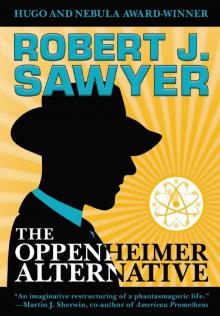 The Oppenheimer Alternative
The Oppenheimer Alternative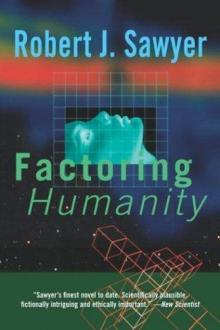 Factoring Humanity
Factoring Humanity The Shoulders of Giants
The Shoulders of Giants Stream of Consciousness
Stream of Consciousness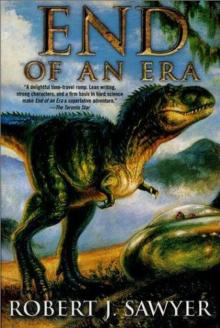 End of an Era
End of an Era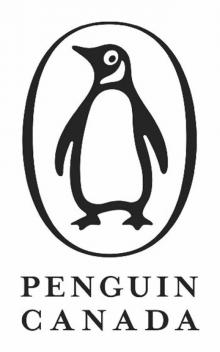 The Terminal Experiment
The Terminal Experiment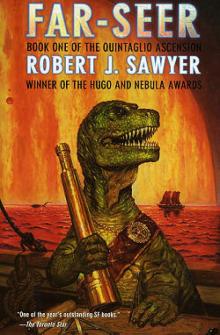 Far-Seer
Far-Seer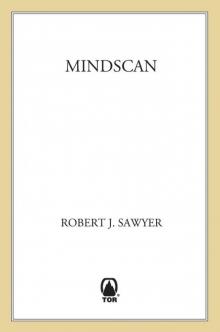 Mindscan
Mindscan You See But You Do Not Observe
You See But You Do Not Observe Star Light, Star Bright
Star Light, Star Bright Wonder
Wonder Wiping Out
Wiping Out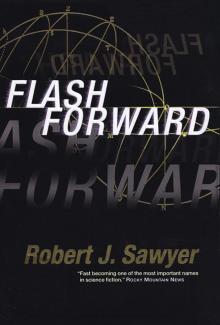 Flashforward
Flashforward Above It All
Above It All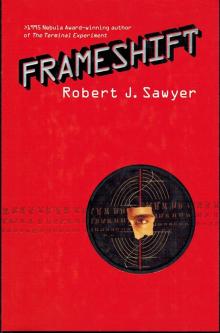 Frameshift
Frameshift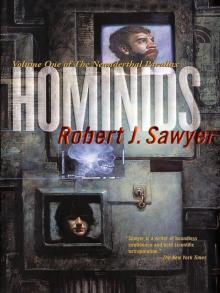 The Neanderthal Parallax, Book One - Hominids
The Neanderthal Parallax, Book One - Hominids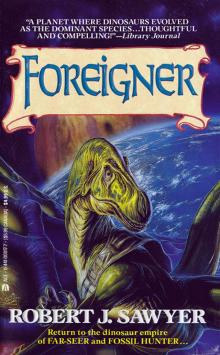 Foreigner
Foreigner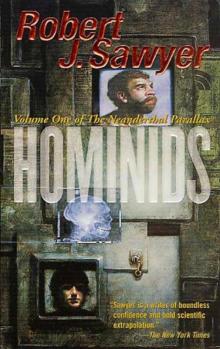 Neanderthal Parallax 1 - Hominids
Neanderthal Parallax 1 - Hominids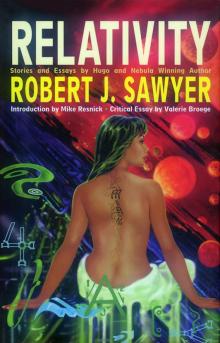 Relativity
Relativity Identity Theft
Identity Theft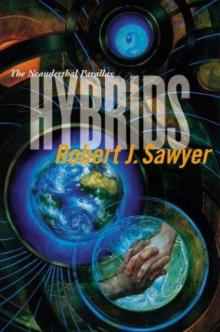 Hybrids np-3
Hybrids np-3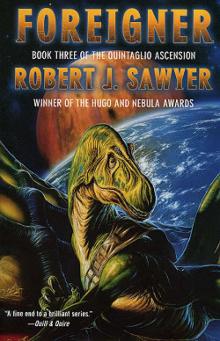 Foreigner qa-3
Foreigner qa-3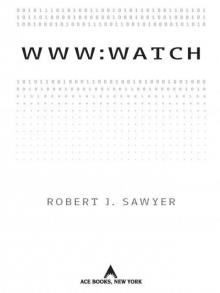 WWW: Watch
WWW: Watch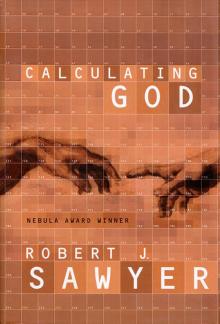 Calculating God
Calculating God The Terminal Experiment (v5)
The Terminal Experiment (v5) Peking Man
Peking Man The Hand You're Dealt
The Hand You're Dealt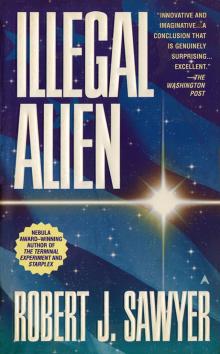 Illegal Alien
Illegal Alien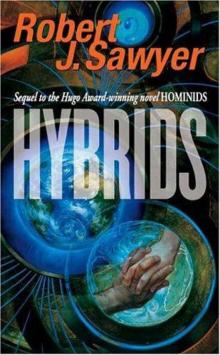 Neanderthal Parallax 3 - Hybrids
Neanderthal Parallax 3 - Hybrids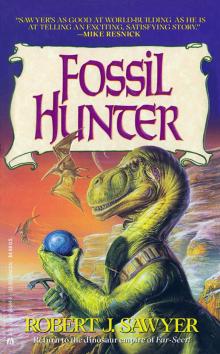 Fossil Hunter
Fossil Hunter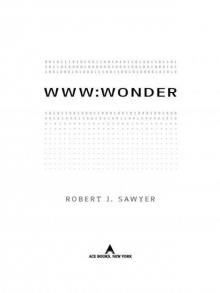 WWW: Wonder
WWW: Wonder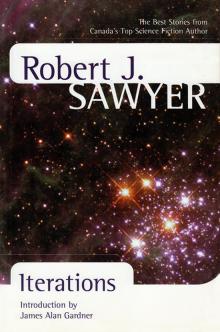 Iterations
Iterations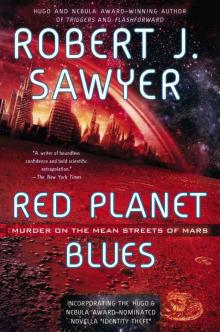 Red Planet Blues
Red Planet Blues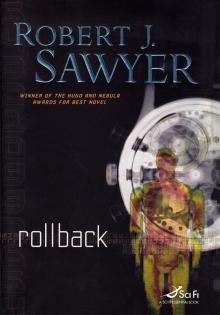 Rollback
Rollback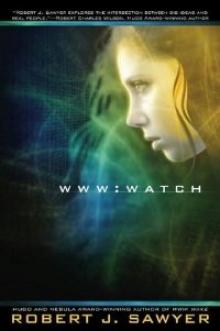 Watch w-2
Watch w-2 Gator
Gator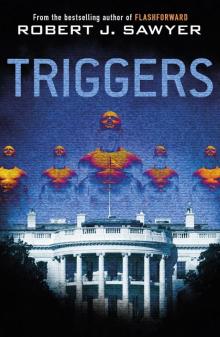 Triggers
Triggers Neanderthal Parallax 2 - Humans
Neanderthal Parallax 2 - Humans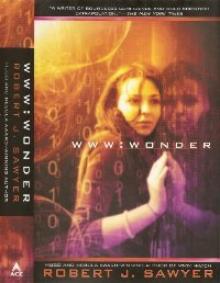 Wonder w-3
Wonder w-3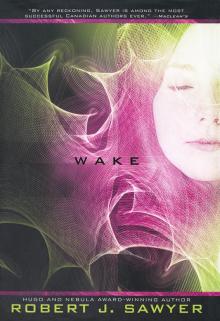 Wake
Wake Just Like Old Times
Just Like Old Times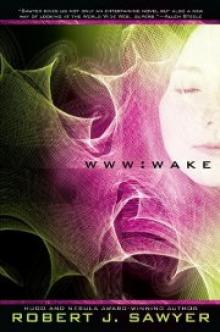 Wake w-1
Wake w-1 Fallen Angel
Fallen Angel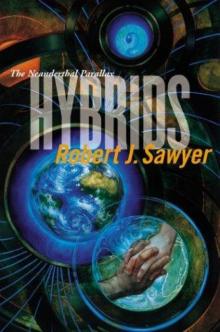 Hybrids
Hybrids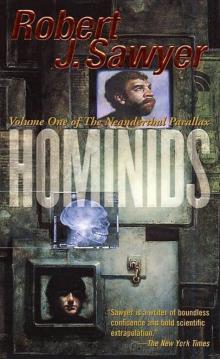 Hominids tnp-1
Hominids tnp-1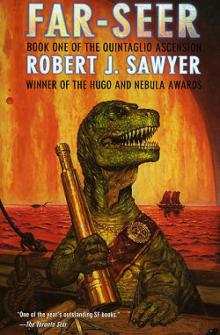 Far-Seer qa-1
Far-Seer qa-1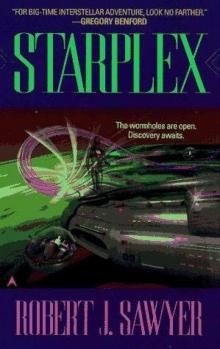 Starplex
Starplex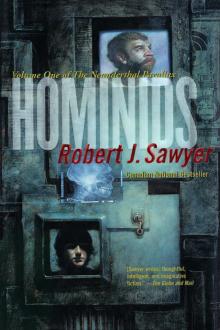 Hominids
Hominids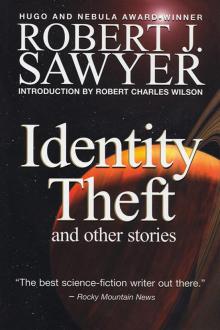 Identity Theft and Other Stories
Identity Theft and Other Stories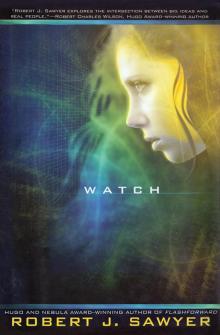 Watch
Watch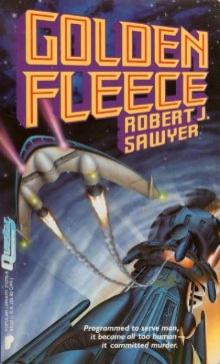 Golden Fleece
Golden Fleece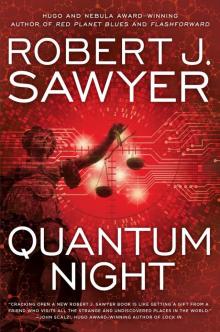 Quantum Night
Quantum Night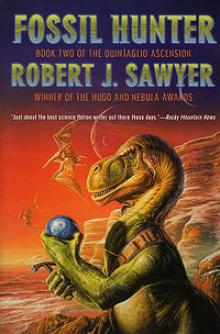 Fossil Hunter qa-2
Fossil Hunter qa-2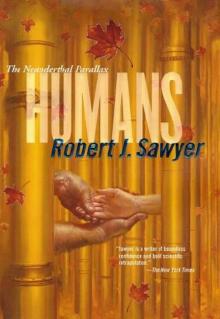 Humans np-2
Humans np-2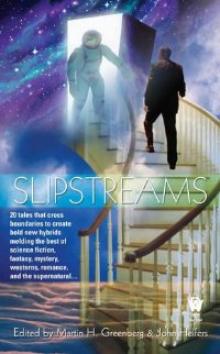 Biding Time
Biding Time